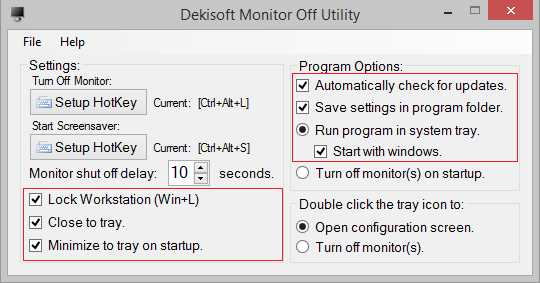
- WINDOWS 10 SCREENSAVER START DELAY INSTALL
- WINDOWS 10 SCREENSAVER START DELAY CODE
- WINDOWS 10 SCREENSAVER START DELAY PASSWORD
- WINDOWS 10 SCREENSAVER START DELAY SERIES
Set should remain in effect until the next call that usesĮS_CONTINUOUS and one of the other state flags are cleared.Īs it's a winAPI, you can call this directly in win32 or mfc application //To stop/start screen saver and monitor power off event

WINDOWS 10 SCREENSAVER START DELAY SERIES
There are series of flags to specify a new state for the current thread: These will prevent to appear screen saver and stop the machine from being suspended automatically. Use SetThreadExecutionState winAPI to tell the operating system that the thread is in use, even if the user is not interacting with the computer. So catch the event from WM_SYSCOMMAND using UINT SC_SCREENSAVE and discarded it by returning 0 or by creating a fake mouse move ( "mouse_event(MOUSEEVENTF_MOVE, 0, 1, 0, 0)") will not work properly if the user enabled password-protected screen saver option.
WINDOWS 10 SCREENSAVER START DELAY PASSWORD
If password protection is enabled by policy, the screen saver is started regardless of what an application does with the SC_SCREENSAVE notification. The last option is nice in that it works even with the password protection policy.Īs Adrian McCarthy mentioned from MSDN that :
WINDOWS 10 SCREENSAVER START DELAY INSTALL
Install a dongle that simulates mouse jiggle.(Assuming you care only when your application is the active application.) Don't let the WM_SYSCOMMAND with SC_SCREENSAVE be passed onto DefWindowProc.Put up a computer-based training window (which requires hooks).SetThreadExecutionState with ES_CONTINUOUS (as described in other answers).So, if it weren't for the caveat, your choices would be: That seems to apply even if you use the SetThreadExecutionState with ES_CONTINUOUS. Windows Vista and later: If password protection is enabled by policy, the screen saver is started regardless of what an application does with the SC_SCREENSAVE notification. The active application receives the WM_SYSCOMMAND message with the wParam parameter set to the SC_SCREENSAVE value, but it does not pass the message to the DefWindowProc function.The active application is not a Windows-based application.Windows does not start the screen saver if any of the following conditions exist: Public Structure MOUSEKEYBDHARDWAREINPUT This comes from : Public Declare Function SendInput Lib "user32" (ByVal nInputs As Integer, ByRef pInputs As INPUT, ByVal cbSize As Integer) As IntegerĬonst KEYEVENTF_EXTENDEDKEY As UInt32 = &H1
WINDOWS 10 SCREENSAVER START DELAY CODE
The code to put in the Tick event: Dim i(0) As INPUT

It's sufficient to move the mouse by a delta of 0,0, no real movement. I put a call to SendInput inside of a Timer that triggers every 50 seconds (just less than the minimum screensaver timeout of 60 seconds). SendInput works! No flash of the screensaver.

Then I peeked at the code of "JiggleMouse" mentioned elsewhere in this question.

Then I tried using user32.dll's SetCursorPos and GetCursorPos. The screensaver turns on for only a moment, not long enough to require a password. The cursor jiggles back and forth and after 1 minute the screensaver flashes on for a short instance and then turns off. I also put this into a Timer's tick event, every 1000 milliseconds: Static dir As Integer = 4Ĭursor.Position = Cursor.Position + New Size(dir, dir) As commented, it works when there is no screensaver password but fails if the screensaver password is active. I tried capturing SC_SCREENSAVE and returning -1 in VB. For testing, I set the screensaver to 1 minute and required a password.


 0 kommentar(er)
0 kommentar(er)
